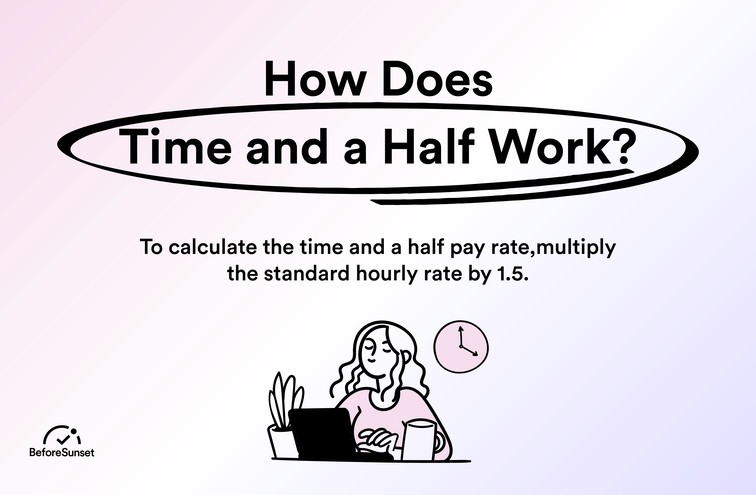Employees may have a range of challenges as a result of working extra. Physical and mental exhaustion are among the largest obstacles, as working longer hours can affect one's stamina and capacity for concentration.
This may result in poorer job performance, challenges managing personal and family obligations, and detrimental effects on general health and wellness.
Additionally, since it may entail working on the weekends or late at night, working overtime can disrupt the work-life balance and raise stress levels. Additionally, this may make it difficult to manage obligations to one's self and those of the family, such as childcare and housework.
Working beyond the call of duty may result in missed team events, missed deadlines, or the need for others to step in and pick up the slack, which can deteriorate relationships with coworkers and management.
Last but not least, working extra frequently can have long-term implications on someone's financial security and job security because burnout and job unhappiness can result in poor performance and a higher risk of being fired.
Because of these difficulties time and a half pay is very important. It is made to fairly reward workers for the additional time and effort they put into putting in overtime.
Employees are compensated for the extra time they work by receiving time and a half pay, which helps to offset the higher effort and reduced free time they experience as a result of working more hours. They feel appreciated and compensated.
Time and a half pay can also aid in retaining staff members because it gives them a financial incentive to be present and ready to work overtime when necessary.
Due to the fact that paying time and a half can be a major expense for the business, it also acts as a deterrent for employers who overwork their staff by assigning them excessive amounts of overtime.

What is time and a half?
Time and a half is a frequent practice in the United States and other countries to pay employees for working more hours than usual. It is regarded as a fair technique to compensate employees for working extra hours because it gives them a better pay rate for their extra time and effort.
Labor regulations also govern this practice in order to protect workers' rights and guarantee they are adequately compensated for their efforts.
In simple terms, time and a half mean an employee is paid 1.5 times their normal hourly rate for working overtime. Their work is rewarded which results in happier more productive employees.
Who qualifies for time and a half?
In general, non-exempt workers who clock in for more than 40 hours in a workweek are entitled to time and a half pay. Employees who are eligible to overtime pay under federal and/or state labor rules are considered non-exempt employees.
Exempt workers who are given a salary and are not eligible for overtime compensation, such as salaried managers and executives, are not entitled to time and a half. Depending on the jurisdiction and the kind of labor completed, different situations may require different qualifications for time and a half compensation.
Exempt and nonexempt employees
Time and a half pay is often not available to exempt employees. Exempt employees are those who are exempt from the Fair Labor Standards Act's (FLSA's) requirements for overtime pay.
Executive, administrative, and professional workers (such as salaried managers and executives), outside sales personnel, specific computer professionals, and specific highly compensated workers are examples of exempt employees.
The specific conditions for exempt status under the FLSA, which might vary depending on the particular employment and jurisdiction, include minimum pay requirements and job duties tests.
Employees who are not exempt are entitled to time and a half. Employees who are eligible for overtime pay under federal and/or state labor rules are considered non-exempt employees.
Hourly workers, some salaried employees who do not meet the requirements for exempt status, domestic workers, agricultural laborers, and some transportation workers are examples of non-exempt employees.
Non-exempt workers who clock in for more than 40 hours per week are often entitled to time and a half pay for the extra hours worked. Depending on the jurisdiction and the kind of labor completed, different situations may require different qualifications for time and a half compensation.

How to calculate time and a half pay rate?
To calculate time and a half compensation, take the following actions:
Calculate the employee's hourly rate: The employee frequently receives this payment for putting in their normal hours.
To calculate the time and a half pay rate, multiply the standard hourly rate by 1.5.
For instance, the time and a half pay rate would be $20 multiplied by 1.5 to equal $30 if the standard hourly rate was $20.
To find: Subtract the number of overtime hours worked from the rate of time and a half. The whole amount of overtime pay owed for those hours will subsequently be delivered to you.
For instance, $30 would be multiplied by 10 hours of work to get $300 as the total overtime pay.
Examples of calculating time and a half
Example 1: An employee earns $20 per hour and works 45 hours in a workweek.
Regular hours (up to 40): $20 x 40 = $800
Overtimes hours (5 hours): $20 x 1.5 = $30 (time and a half rate)
Overtime pay (5 hours): $30 x 5 = $150
Total pay for the workweek: $800 + $150 = $950
Example 2: An employee earns $25 per hour and works 50 hours in a workweek.
Regular hours (up to 40): $25 x 40 = $1000
overtimes hours (10 hours): $25 x 1.5 = $37.5 (time and a half rate)
overtimes pay (10 hours): $37.5 x 10 = $375
Total pay for the workweek: $1000 + $375 = $1375
What is time and a half for $15 an hour?
If you want to calculate time and a half, you would need to multiply the regular hourly rate by 1.5. For $15 an hour, the calculation would be $15 x 1.5 = $22.50

Calculating time and a half pay with bonuses
Calculating time and a half pay including bonuses, you would first need to determine the total regular pay (without the bonus) for the hours worked. Then, multiply that amount by 1.5 to find the time and a half-pay rate. Finally, add the bonus to the time and a half pay rate to get the final payment amount.
half-payFor example, if an employee worked 40 hours at a rate of $15 an hour, their regular pay would be 40 x $15 = $600. Time and a half pay for this employee would be $600 x 1.5 = $900. If they also received a $100 bonus, their total pay would be $900 + $100 = $1000.
Calculating time and a half pay for hourly employees
As an hourly employee, If you want to calculate time and a half, you would need to first determine the regular hourly rate. Then, multiply that rate by 1.5 to find the time and a half pay rate. Finally, multiply the time and a half rate by the number of overtime hours worked.
If an employee's regular hourly rate is $15 and they worked 5 overtime hours, their time and a-half pay rate would be $15 x 1.5 = $22.50. Their total time and a half pay would be $22.50 x 5 = $112.50
Is overtime pay time and a half?
Typically, overtime pay is calculated as time and a half, meaning that employees receive their regular hourly rate multiplied by 1.5 for every hour worked over a specified limit (e.g. 40 hours in a workweek). This is a common standard for overtime pay in the United States.
However, there can be variations in overtime pay calculation based on specific laws and collective bargaining agreements.
Common challenges when calculating overtime hours pay
Due to a variety of factors, calculating overtime pay can be a complicated and difficult undertaking for employers. Accurately keeping track of employees' overtime hours, especially for those who work irregular hours, is a significant difficulty.
Additionally, it can be difficult to ensure compliance with state and federal overtime laws and regulations, which differ in terms of the needed pay rate, eligibility conditions, and reporting obligations.
Another challenge is correctly determining the overtime pay rate because different employees may be entitled for different overtime pay rates or have varied regular hourly rates depending on their job responsibilities and classification.
Also, keeping up with modifications to labor rules, such as adjustments to minimum wage rates, can be challenging for businesses when figuring out overtime pay.

Other common overtime rates
In addition to time and a half, another typical overtime rate is double time, which is frequently compensated for work performed on weekends or during holidays and is calculated as double the standard hourly rate.
In businesses where employees are not entitled to overtime compensation, straight time is another often used rate where the overtime pay rate is equal to the regular hourly rate.
Additionally, there is a "variable" rate, where the overtime pay rate is established using a formula or an agreement between the employer and employee and is subject to alter depending on variables like productivity quotas or shift differences.
Employers occasionally go above and beyond the standard overtime pay rate by providing premium compensation to workers who work extra hours.


